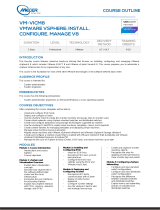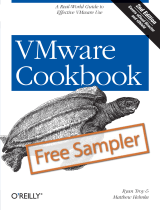
Additional Resources...................................................................................................................... 5
1 Introduction................................................................................................................................. 6
Purpose...................................................................................................................................................................................6
Audience................................................................................................................................................................................. 6
2 Overview..................................................................................................................................... 7
PowerStore virtualization terminology and definitions......................................................................................................7
Virtual volumes overview................................................................................................................................................8
Storage containers overview......................................................................................................................................... 9
Virtualization architecture and configuration.................................................................................................................... 11
Working with virtual resources............................................................................................................................................11
3 Getting started...........................................................................................................................14
Hypervisor configuration for PowerStore X model appliances...................................................................................... 14
VMware licensing........................................................................................................................................................... 14
vCenter and vSphere configuration changes............................................................................................................. 15
ESXi passwords.............................................................................................................................................................. 16
Configure a vCenter Server connection to a PowerStore T model cluster............................................................17
Using an external ESXi host with a PowerStore cluster................................................................................................. 18
Network configuration for PowerStore X model appliances .........................................................................................18
4 Virtualization configuration in PowerStore appliances................................................................... 20
Managing virtualization components in the PowerStore Manager...............................................................................20
Monitoring and managing VMs....................................................................................................................................20
Monitoring and managing vVols................................................................................................................................... 21
Monitoring and managing storage containers............................................................................................................ 21
Change a vCenter Server connection.............................................................................................................................. 22
Additional VMware software and configuration.............................................................................................................. 22
Upgrading PowerStore X model appliances.....................................................................................................................23
Upgrade readiness for PowerStore X model appliances.......................................................................................... 23
Upgrading PowerStore X model node firmware........................................................................................................24
Updating the internal ESXi hosts.................................................................................................................................25
Upgrading the PowerStore OS ...................................................................................................................................26
5 VMware NSX-V.......................................................................................................................... 28
VMware NSX-V introduction.............................................................................................................................................28
Add internal ESXi hosts to an existing NSX-V deployment........................................................................................... 28
6 Best practices and limitations..................................................................................................... 29
Internal components visible in vCenter Server................................................................................................................29
Block access for LUNs........................................................................................................................................................29
Service and recovery.......................................................................................................................................................... 30
Support for VSS............................................................................................................................................................ 30
Contents
Contents 3























